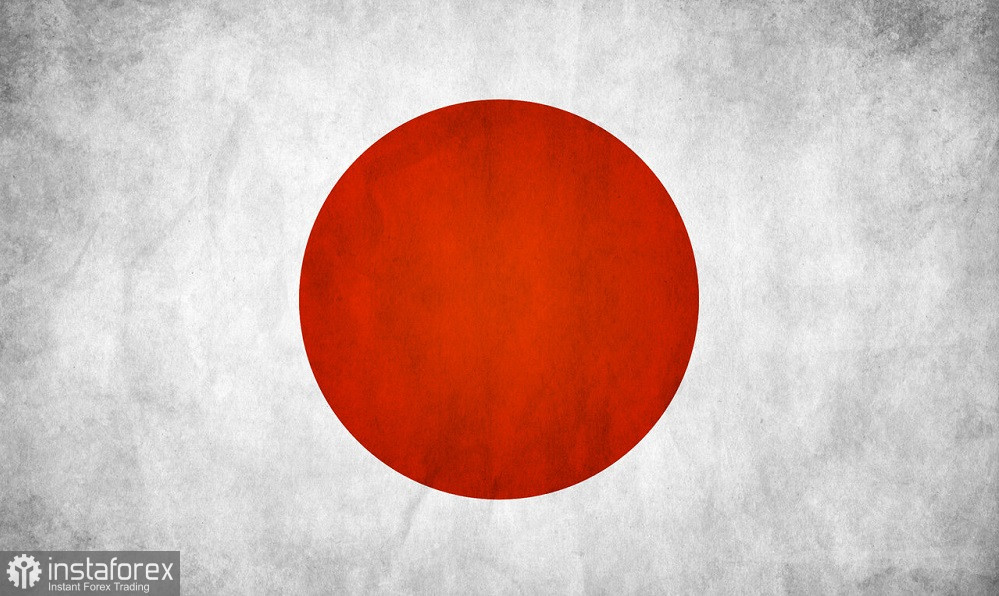In early June, the USD/JPY pair showed a strong downtrend amid the broad US dollar weakness. Since July 6th, the pair has been falling almost without any significant pullbacks. Take a look at the daily chart of the USD/JPY pair: starting from the Thursday before last, each 1D candlestick has been bearish. Last Friday, buyers were able to show some initiative, pushing the price up to 138.80. However, it struggled at the start of the new trading week. In the first half of Monday's session, the price slid under the weight of the weak greenback, but during the US session, the dollar bulls made their presence felt once again. All of this indicates the ambiguity of the current situation.
The pair fell by more than 650 pips in July. This is an impressive result but it also raises the question: at what level will the downtrend stop? This question is not an idle one, as the risk of hitting a "price bottom" increases with each additional step. The pair is trading near two-month lows, and from a technical perspective, the pair still has a potential to fall further. The closest price barrier is located nearby, at the 137.60 level (the lower line of the Bollinger Bands indicator on the daily chart). The main support level corresponds to the 135.80 target (the lower band of the Kumo cloud on the 1D chart).

From a "fundamental" perspective, the situation does not appear to be as straightforward as it seems. The yen is unable to play its own game – the USD/JPY pair is falling solely due to the US dollar's weakness. Moreover, the Bank of Japan may exert pressure on the yen next week by voicing dovish rhetoric, while the Federal Reserve may play the role of the greenback's ally if it leaves the door open for further interest rate hikes. Consequently, the downward momentum has faded. Short positions appear risky as the chances of hitting a "price bottom" have increased.
Recalling the outcome of the previous June meeting, the BOJ kept all monetary policy parameters unchanged. Although BOJ Governor Kazuo Ueda once again mentioned the need for calibration, his statement was more declarative in nature. According to the newly appointed head of the central bank, any changes will occur "very smoothly and gradually." The Japanese central bank seems set to use the full 18-month policy review duration that was announced, and the first changes in verbal communication are unlikely to appear before September or October.
Currently, BOJ officials are still emphasizing a dovish rhetoric, reaffirming their commitment to accommodative policies. For example, BOJ Deputy Governor Shinichi Uchida categorically ruled out the possibility of an early termination of ultra-soft monetary policy at the beginning of July. Another BOJ Deputy Governor, Ryozo Himino, stated in an interview with Reuters that the central bank sees no signs of risks of high inflation comparable to what is observed in Europe and the United States.
Take note that the Consumer Price Index in Japan decreased to 3.2%, contrary to expectations of a rise to 4.1%. For comparison, in January of this year, the indicator stood at 4.3% year-on-year. The consumer price index excluding fresh food prices also demonstrated a downtrend, slowing down to 3.2% (compared to 3.4% in April).
Inflation is also slowing down in the United States, according to reports published last week. However, the market is nearly certain that the Fed will raise interest rates by 25 basis points at the July meeting (data from CME shows that analysts have a 96% chance of a rate hike). Simultaneously, there is a possibility that the US central bank will take further steps to tighten monetary policy in order to curb inflationary pressures. Some Fed officials have maintained a hawkish stance despite the inflation data. For instance, Mary Daly, President of the Federal Reserve Bank of San Francisco, warned that it is still too early to declare victory over inflation. Another Fed representative, Christopher Waller, similarly advocated for further rate hikes, citing a strong labor market and positive overall indicators of the US economy. Like Daly, he emphasized that it is premature to declare victory over inflation and recalled events from last year when inflation initially slowed down but then picked up again.
In my opinion, sellers have shrugged off the disappointing inflation reports published last week. The downward momentum has subsided, and to reignite it, a significant catalyst is needed. It is evident that traders are now waiting for the key events of the month: the Fed's announcement of its meeting outcome on July 26th and the BOJ's verdict on July 28th.
From a technical perspective, the situation is as follows. On Friday, the bears tried to break below the 137.60 support level (lower Bollinger Bands line on the daily chart) but lost momentum towards the end of the week, closing at 138.80. On Monday, sellers also tried to approach the aforementioned price barrier but failed. This suggests that the 137.60 target is a strong support level that could serve as the bottom of the downward movement. In other words, it is quite possible that traders have formed or at least "found" a bottom in this range.
Therefore, short positions appear extremely risky. The resistance level is at 140.00, where the Tenkan-sen and Kijun-sen lines on the daily chart intersect. We can consider this target as our goal for the bullish rebound.
 English
English 
 Русский
Русский Bahasa Indonesia
Bahasa Indonesia Bahasa Malay
Bahasa Malay ไทย
ไทย Español
Español Deutsch
Deutsch Български
Български Français
Français Tiếng Việt
Tiếng Việt 中文
中文 বাংলা
বাংলা हिन्दी
हिन्दी Čeština
Čeština Українська
Українська Română
Română

